The Wagyu Shop Prefecture Collection
At The Wagyu Shop™, we offer a variety of types of authentic Japanese Wagyu beef. But what makes these different types of Wagyu unique? The primary way to distinguish between Wagyu varieties is the prefecture from which each one originates. In Japan, there are 47 prefectures, which is similar to states or provinces in other countries. Of those 47 designated regions, a handful of prefectures are responsible for producing the finest beef in the world.
The area where the beef comes from directly correlates to its flavors and other characteristics. This is comparable to wines, which are thought to be noticeably different based on the area of a particular country or region where they originate and which are more highly regarded when coming from specific areas (like the Bordeaux region, for example). The Wagyu Shop™ is proud to offer options from the top prefectures for authentic Japanese Wagyu: Miyazaki, Hokkaido, Yamaguchi, Kagawa and Okinawa.
Cattle are born and raised in Kyushu, in Miyazaki Prefecture. As
only A4 Wagyu and A5 Wagyu will qualify as Miyazakigyu, these cattle are
meticulously tended to and fed a very precise diet of wheat, rice,
corn and barley. Due to its sweet, rich umami and consistent snowflake-like marbling, Miyazakigyu received the Prime Minister's Award for excellence three consecutive times, and went on to win the Wagyu Olympics in 2007 and 2012. Miyazakigyu's fantastic reputation and award-winning history make it one of the top choices for authentic Japanese Wagyu beef.
As the largest and northernmost island of Japan, Hokkaido is known for its rolling, lush hills and volcanic mountains. The island's fairly low temperatures yield ideal climate conditions for raising Wagyu. On Daimaru Farm, cattle are raised in an open, free air-flowing environment and fed for precisely 600 to 650 days. The specific feeding regulations and plenty of exposure to fresh air and water produce a uniquely tender Wagyu with subtle umami.
Takamori Wagyu originates from the single farm of Iwakuni in Yamaguchi Prefecture. Famously known as "drunken Wagyu," cattle are fed a fermented sake mash made from leftover rice from the Dassai Sake Brewery. Open grazing in the pasture allows for plenty of exposure to fresh air. The unique diet and living conditions give the beef a mild and silky texture with a rich mouthfeel. Cattle must be graded A4 and above to qualify as Takamori Wagyu. This luxurious and exclusive Wagyu was awarded the winner of "Fat Quality" in the 2012 Wagyu Championships.
Exclusively known as "Olive Wagyu," the cattle produced in the mild climate of Shodoshima Island in Kagawa Prefecture are home to only 1,700 Sanuki olive-fed Wagyu. Raised on a special feed of dehydrated and roasted mulch of olives, this Wagyu is famously known for its higher levels of oleic acid, yellowed fat and nutty rich taste. Olive Wagyu was awarded for "Fat Quality" in the 2017 Wagyu Olympics.
In the subtropical climate of Okinawa, Motobu gyu is raised in Yanbaru, the northern end of the island. Cattle here thrive on the island's rich agriculture and forestry and are fed a mix of Orion Beer brewer's grains and molasses. This unique feed is fermented for 10 to 14 days, making it rich in fiber and easy to digest. The tender yet sweet flavor profile produced by this process won seven consecutive times at the Okinawa Stock Raising Expo since 2006, and earned an outstanding award at the Japan National Livestock Agricultural Competition.
